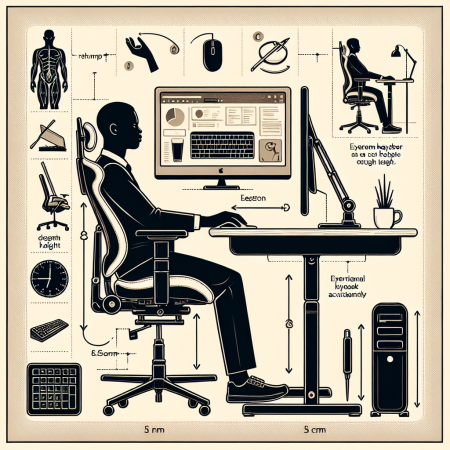How to Keep Your Work From Home Setup Ergonomic
Choosing the Right Desk
When setting up your work-from-home station, one of the first things to consider is the type of desk you will be using. Choose a desk that is the appropriate height to allow your arms to rest comfortably at a 90-degree angle when typing. A desk with adjustable height capabilities is ideal, as it gives you the flexibility to customize it to your specific needs.
Make sure the desk has enough surface area to accommodate your computer, keyboard, mouse, and any other necessary accessories without feeling cluttered. Additionally, opt for a desk with rounded edges to prevent any discomfort or strain on your wrists while working.
Chair Selection and Adjustment
Investing in a good quality ergonomic chair is crucial for maintaining a healthy posture during long work hours. Look for a chair with lumbar support to keep your lower back properly aligned and supported. Adjustable armrests are also beneficial in preventing shoulder and neck strain.
Adjust the height of your chair so that your feet are flat on the floor and your knees are at a 90-degree angle. Your computer screen should be at eye level when sitting upright in your chair. Remember to take short breaks to stretch and move around to avoid stiffness or discomfort.
Proper Monitor Placement
The positioning of your computer monitor plays a significant role in reducing eye strain and maintaining good posture. Position the monitor directly in front of you at arm’s length away, with the top of the screen at or slightly below eye level. This alignment helps reduce neck strain and minimizes the need to tilt your head up or down.
Avoid placing the monitor in direct sunlight to prevent glare and adjust the brightness and contrast settings to comfortable levels. Consider using an adjustable monitor stand to achieve the optimal height and angle for your specific setup.
Keyboard and Mouse Setup
Arrange your keyboard and mouse in a way that allows your arms to rest comfortably at your sides with your elbows at a 90-degree angle. Your wrists should remain straight while typing to avoid strain. Placing a wrist pad in front of the keyboard can provide additional support and cushioning.
Position the mouse within easy reach, next to the keyboard, to prevent overreaching or awkward hand positions. Using a mouse pad with a wrist rest can help alleviate pressure on the wrist and forearm muscles. Remember to take short breaks and stretch your fingers and hands periodically.
Organizing Cables and Accessories
Keep your work area tidy and organized by managing cables and accessories efficiently. Use cable management solutions such as cable clips or sleeves to keep cords neat and prevent tangling. This not only enhances the aesthetics of your workspace but also reduces the risk of tripping hazards.
Store frequently used items such as pens, notebooks, and chargers within easy reach to minimize reaching or twisting motions. Use desk organizers or drawers to keep clutter at bay and maintain a clean and distraction-free work environment. Regularly declutter and reevaluate your workspace setup to ensure it remains ergonomic and efficient.
Related Content
- How to Use Facebook Ads to Reach Your Target Audience
- How I Build Trust With New Audiences in Under 10 Minutes
- Why Your Marketing Budget Is Being Wasted
- Supercharge your pipeline by offering niche coaching sessions in emerging 2025 markets
- Unlock unprecedented sales by integrating immersive technology in 2025

